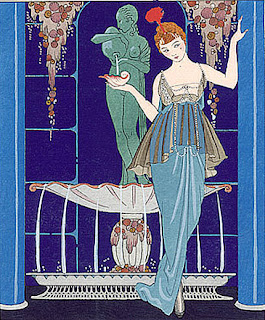 The explosion of email has made many Luddites (hi, Dad!) complain that the art of letter-writing is gone forever. Not so, I say; emails, when written with care, can be just as creative, informative, and loving as the best of snail mail (hi, Dad, again!).
The explosion of email has made many Luddites (hi, Dad!) complain that the art of letter-writing is gone forever. Not so, I say; emails, when written with care, can be just as creative, informative, and loving as the best of snail mail (hi, Dad, again!).
Writing letters was a crucial part of any lady’s day; she couldn’t just pick up the phone and call her girlfriend in London. She had to sit down at her escritoire, locate a sheet of paper and a freshly-sharpened pen, and write. We have letters from the period available to read, and they are as mundane as what the family ate for dinner the night before and as provocative as detailing the pros and cons of various suitors.

Letters are an easy way to tell a story, albeit an overdone one; the bane of Cara‘s existence, Samuel Richardson‘s Clarissa, is written entirely in letters. Current Regency authors frequently use letters to reveal characters’ history without doing the dreaded backstory dump.
And, coincidentally enough (honestly! I started writing this post first!), I’ve just started reading Karen Ranney‘s Till We Meet Again, with a crucial plot point revolving around the identity of the person who wrote some letters. Our own Janet‘s Dedication has that as well.
Do you still write letters? How about creative, interesting and correctly-written emails? Do you like reading letters in books? Which are your favorites?
Be sure and sign up for the all-new Riskies newsletter at riskies@yahoo.com, with “newsletter” in the subject line. You’ll get mail!









